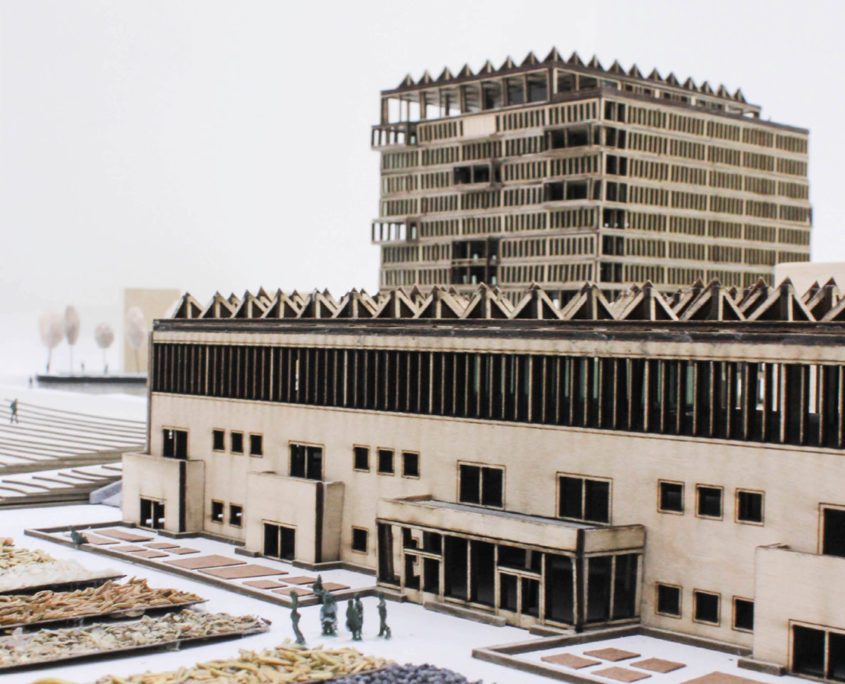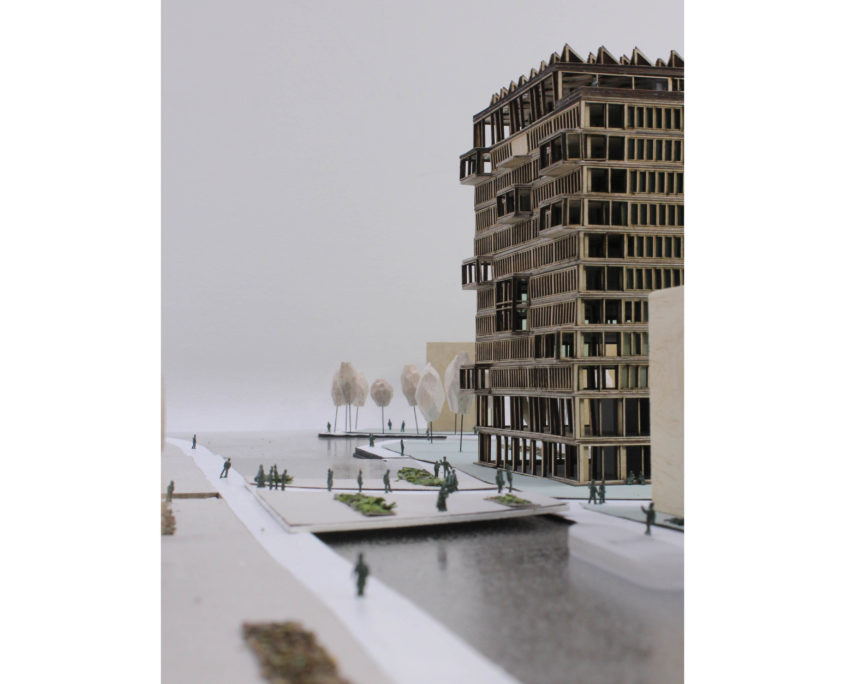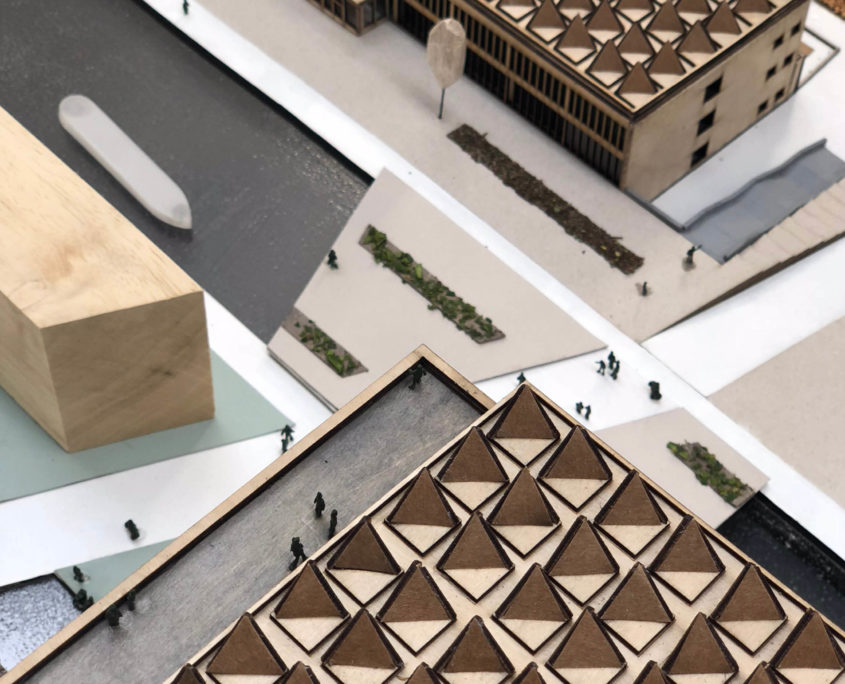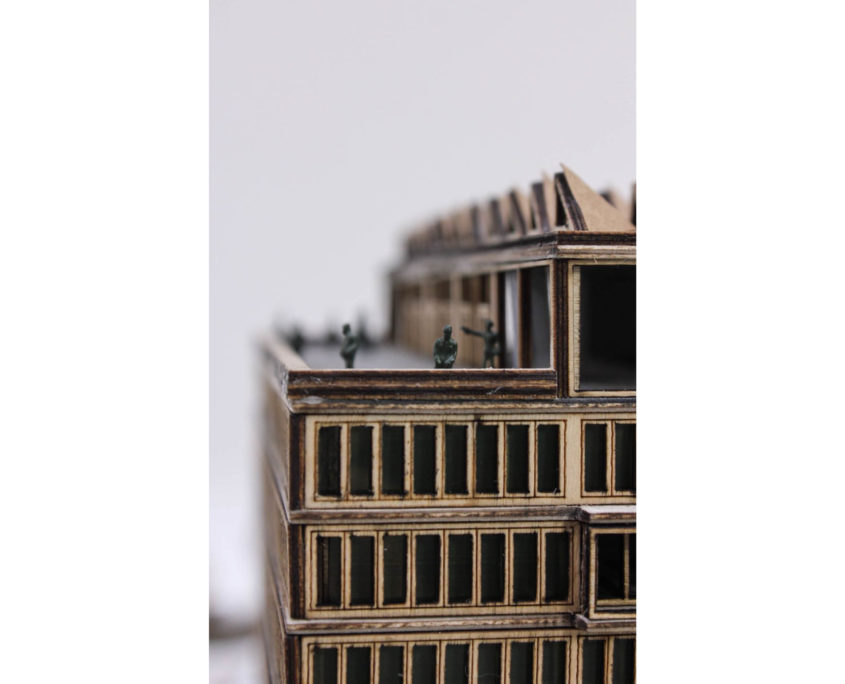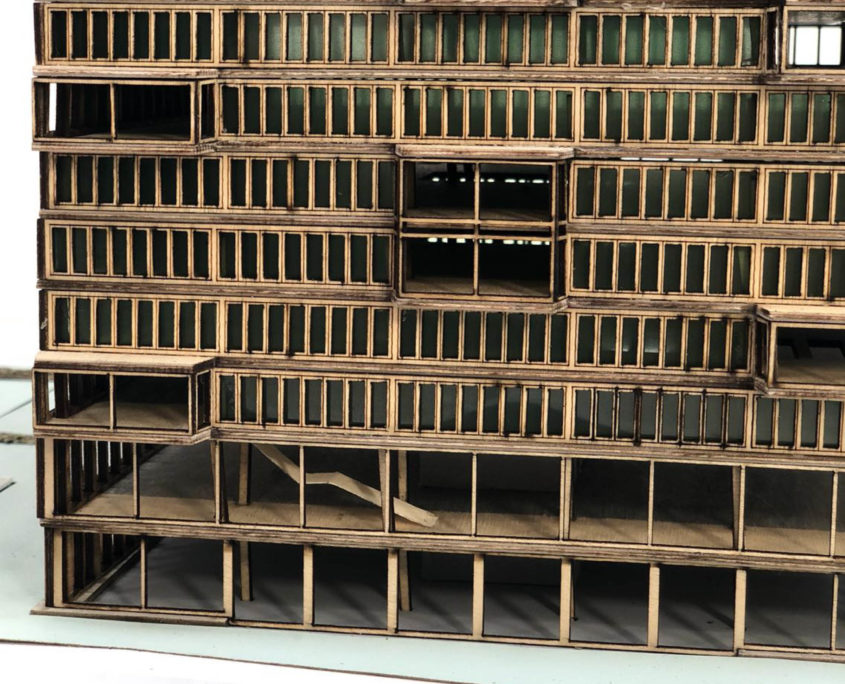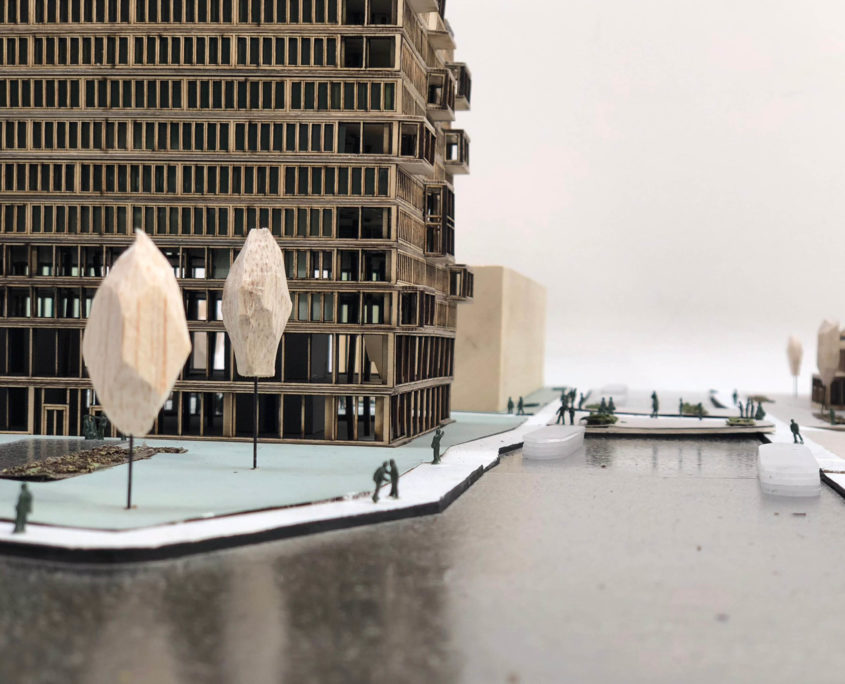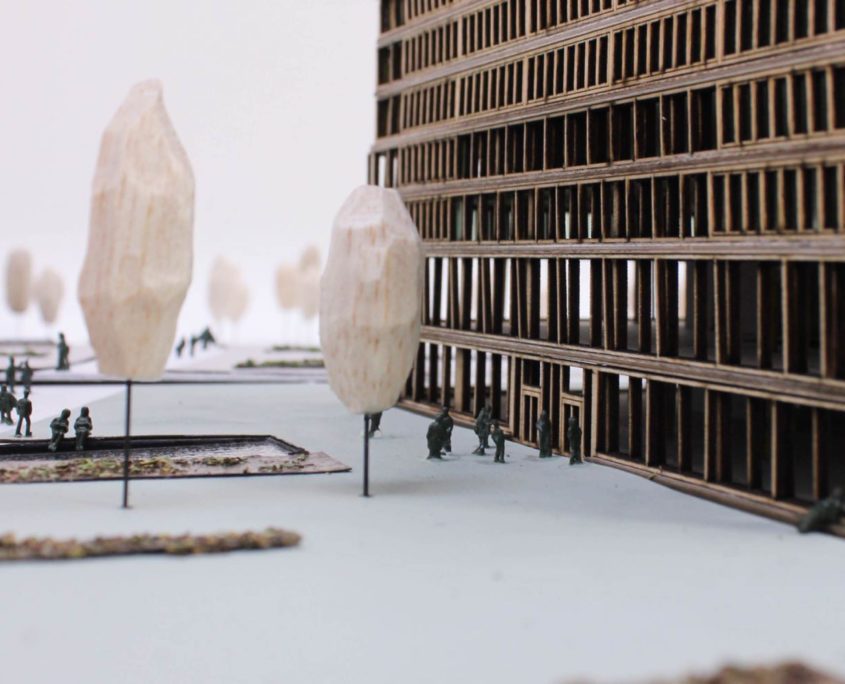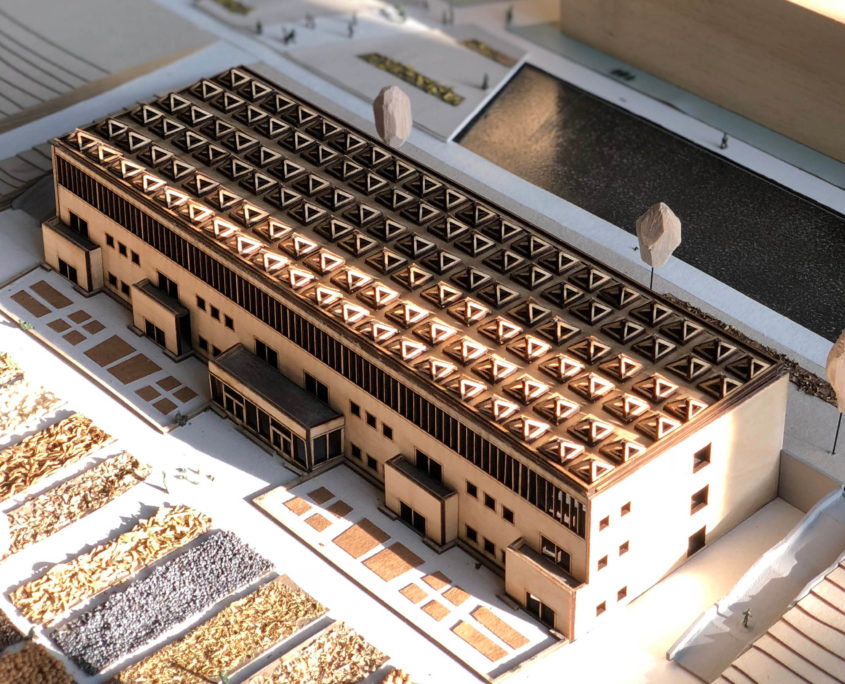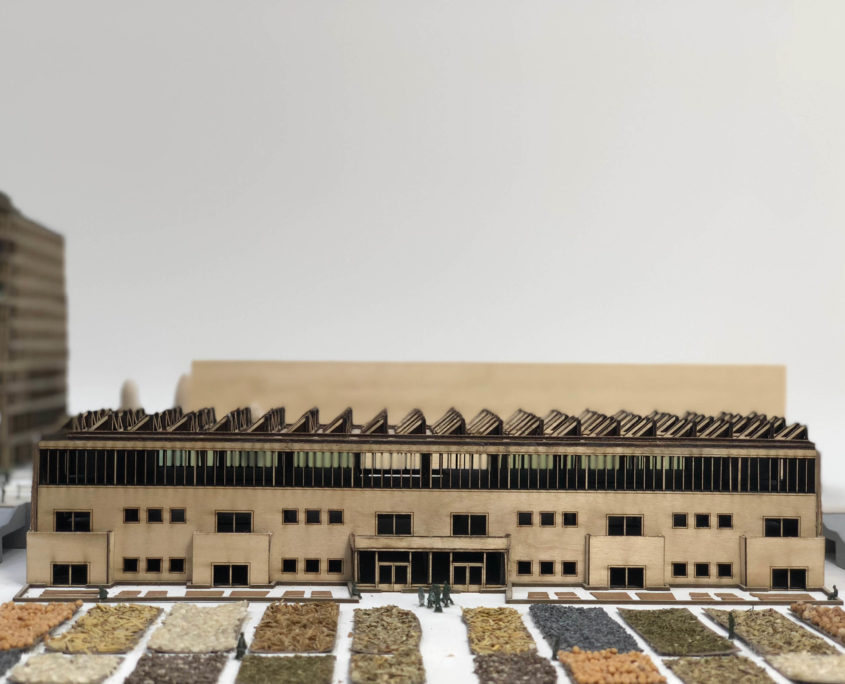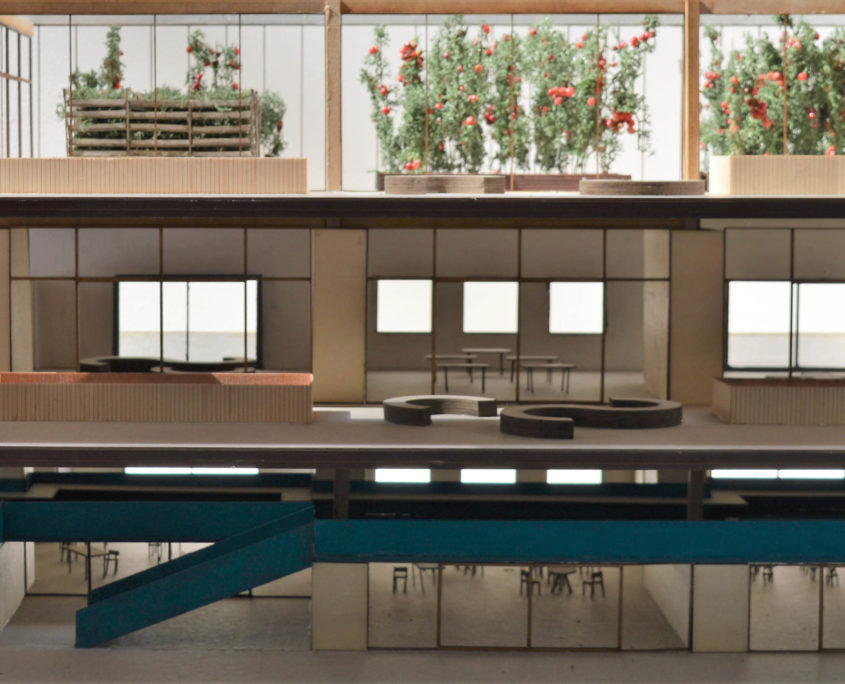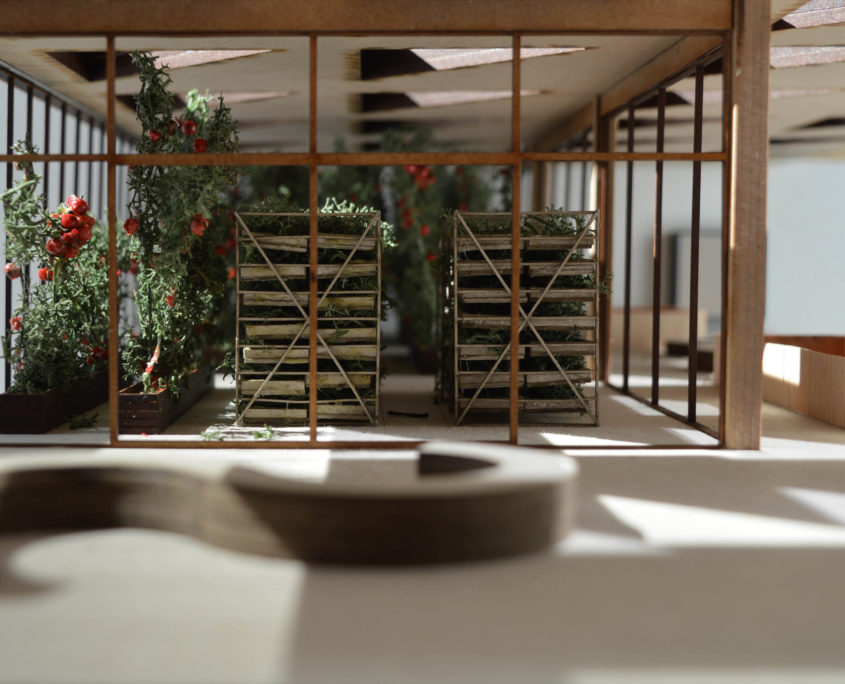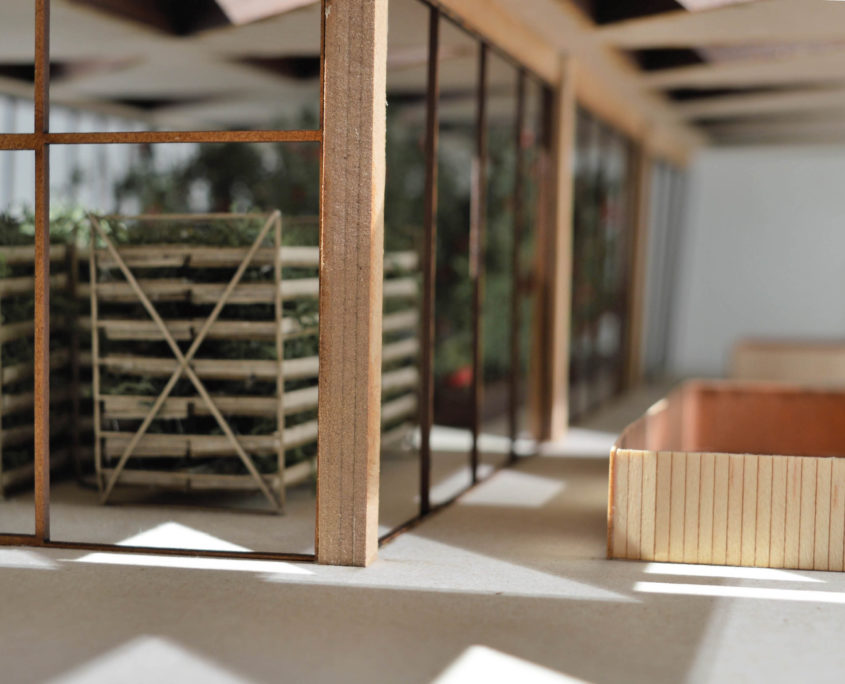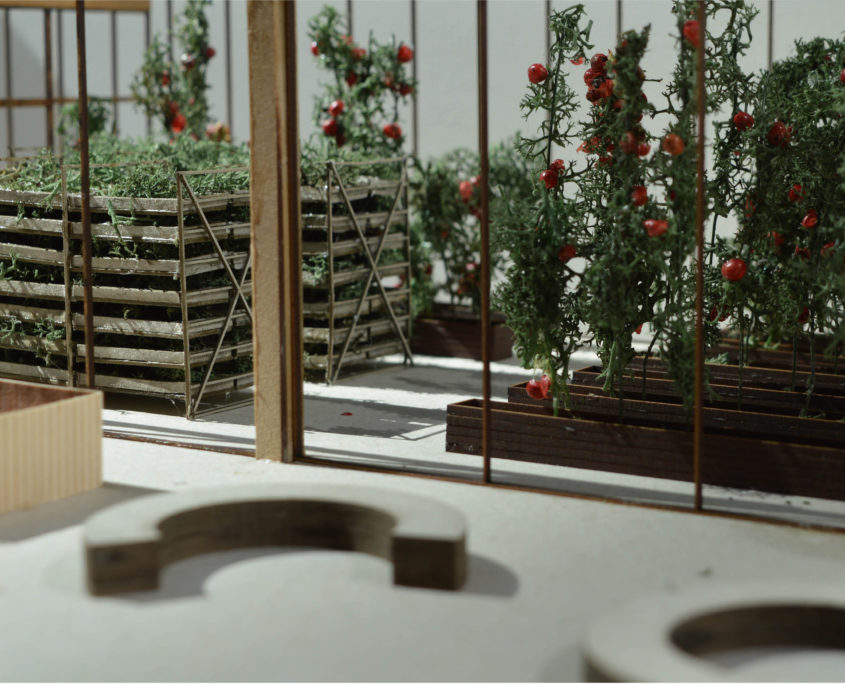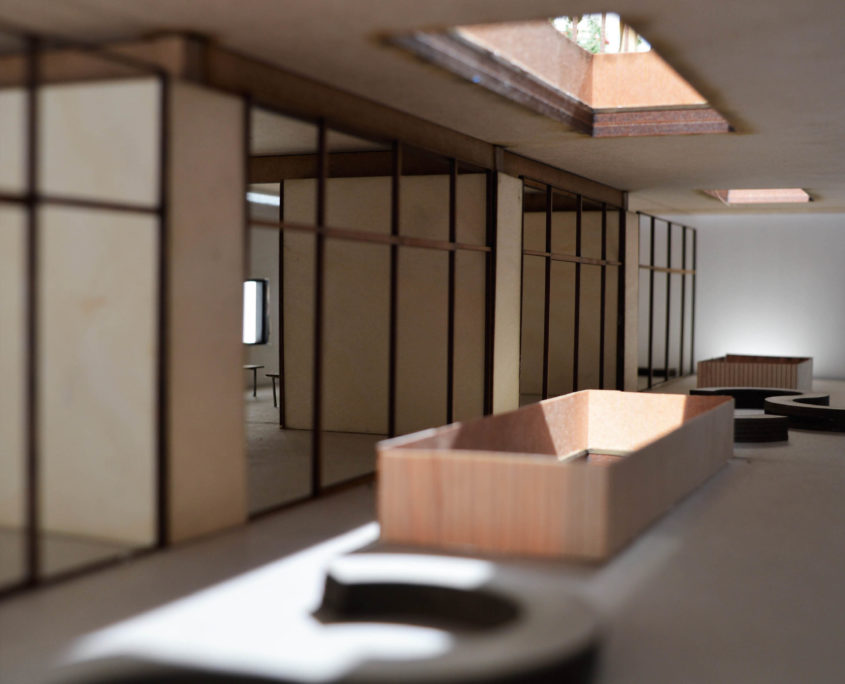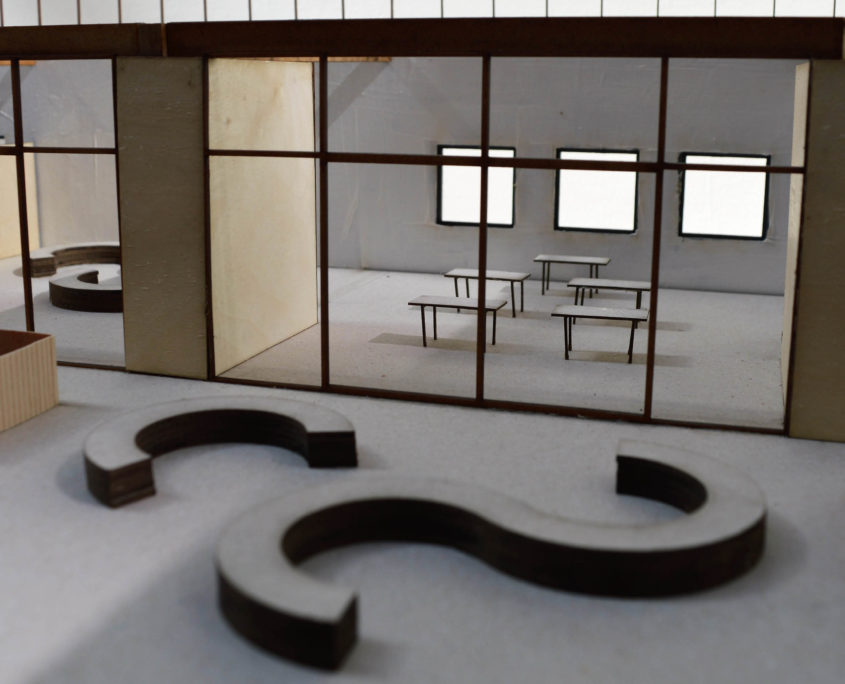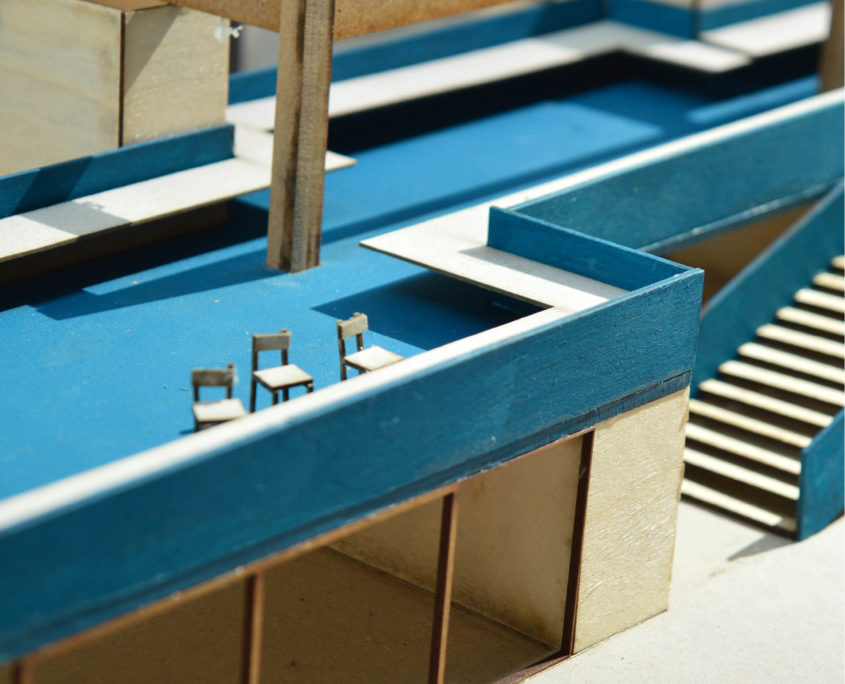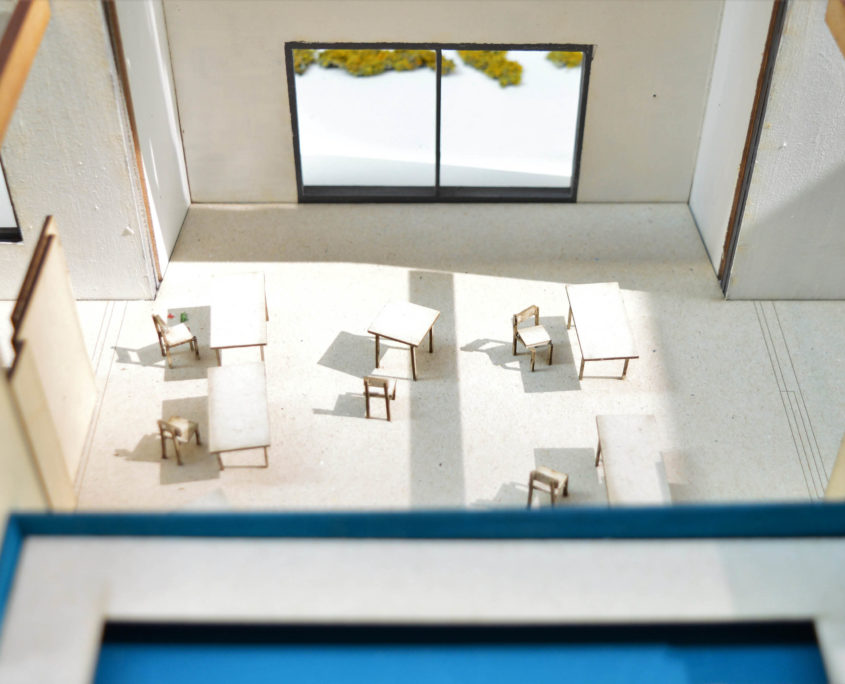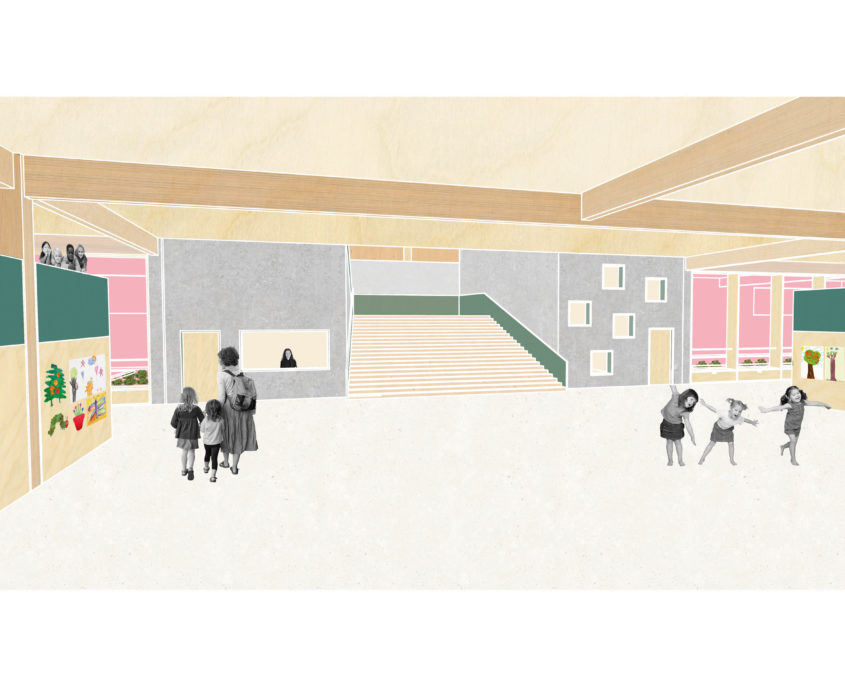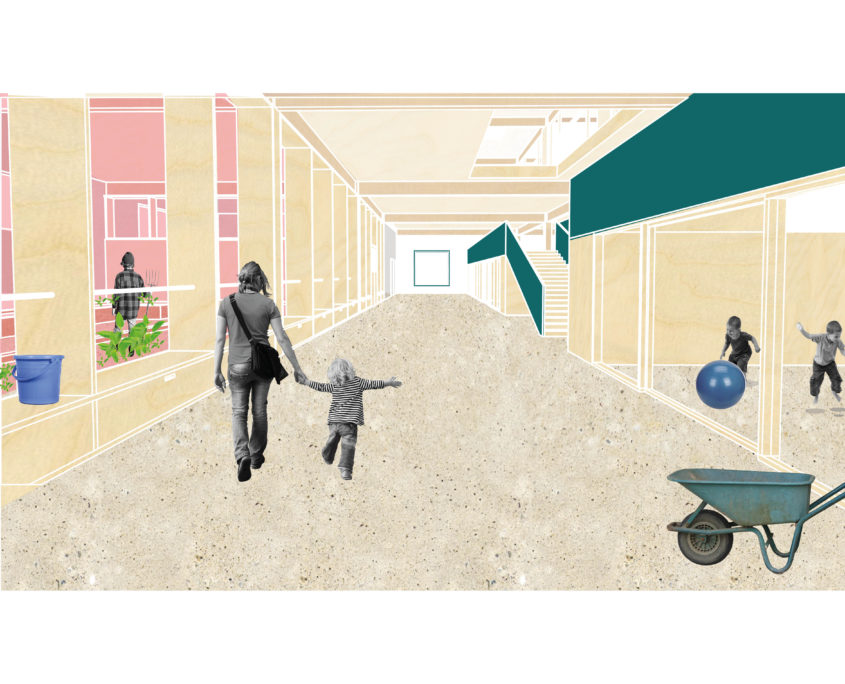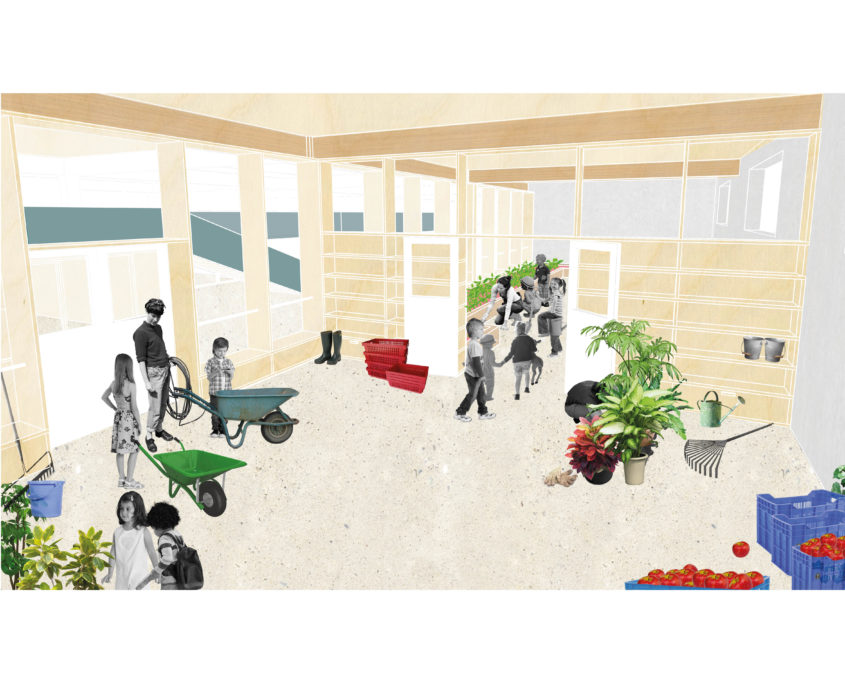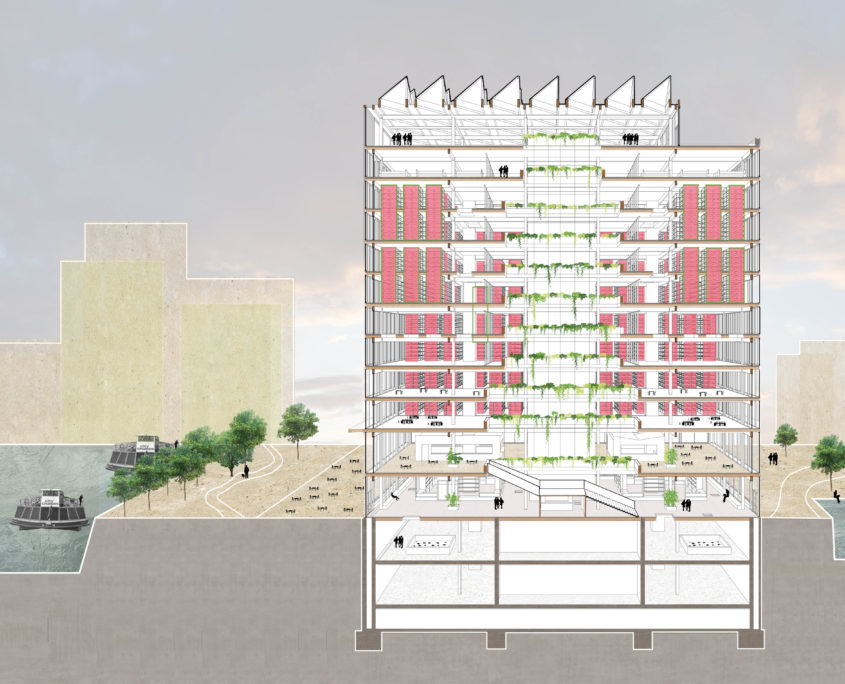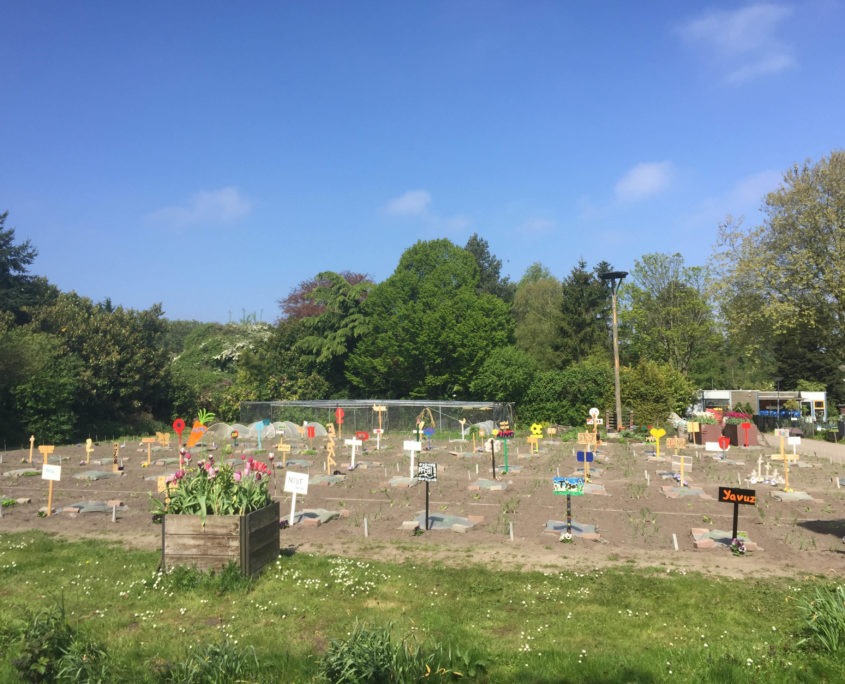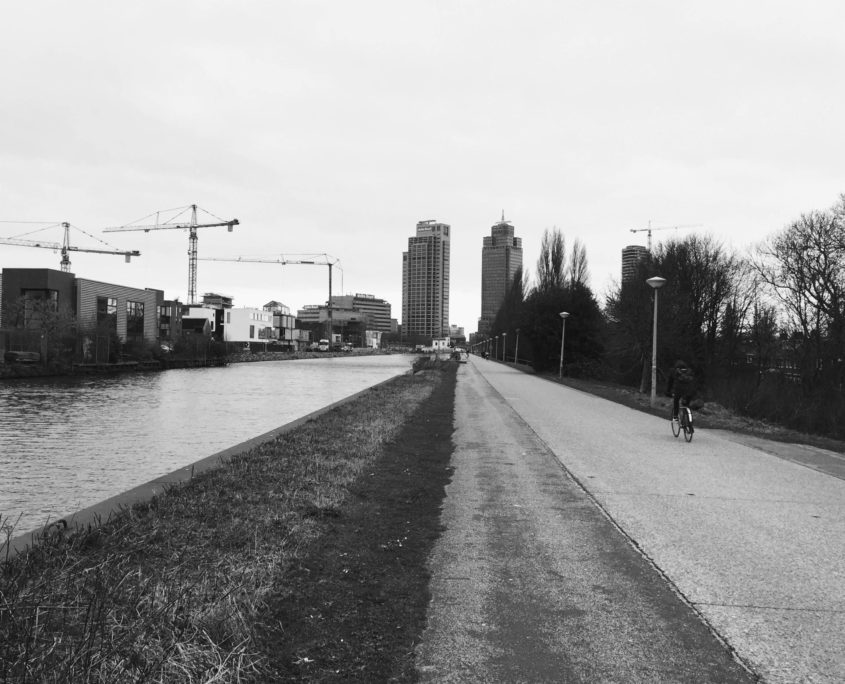Location
Weespertrekvaart
Amsterdam (NL)
Program
Aquaponics Farm for
the production of fish,
vegetables, and insects
24/7 Food market
City canteen
Food laboratory
Elementary school
School garden
Area
42,500 m2
University
Graduation project
MSc Architecture
Chair of Complex Projects (CP)
Delft University of Technology
Delft (NL)
&
Institute for Advanced Metropolitan Solutions (AMS)
Amsterdam (NL)
Tutors
O. Caso
G. Koskamp
Period
Feb 2017 – Apr 2018
Garden City 2050
PDF drawings
Garden City 2050
The AMS-Mid City graduation studio stimulated an open vision towards future city architectural development. The research phase on a group and individual level gave insight to the future issues of a growing and densifying city, transformed into architectural opportunities in order to socially support the people of Amsterdam.
At the beginning of the graduation studio, three groups of students were assigned to three different research areas of Amsterdam: Amsterdam Centraal, Amsterdam Amstel, and Amsterdam Zuid-Oost. These areas were chosen by the municipality of Amsterdam as future development areas.
On a group level, I got assigned to do research on the Amstel location, the only area that in the near future will be transformed from an undefined and underdeveloped suburb to a well-developed, and integrated lively city environment.
The group research on the Amstel area was translated into a future urban development strategy that formed the context in which the individual designs were embedded over many different scales, such as accessibility, connectivity and social cohesion. This group research was combined and made visual through a printed book as well as a 1:1000 site model.
Whilst my Garden City 2050 project is part of a this larger future urban strategy for the Amstel, this graduation project addresses the issue of urban densification together with the rising question on how to sustainably provide the future city with food.
Amsterdam 2050
By the year 2050, this planet will house nine billion people. The Dutch population is expected to increase from 16,3 million in 2018 to 17,6 million people in 2050. This population growth will mostly take place in the Dutch cities and their nearby surroundings. The Amsterdam municipality envisions to build 50,000 new dwellings up to 2025 in order to cope with this increase in population.
At the same time, due to population growth, Amsterdam needs to figure out how to sustain the well-being – physical, mental, and social health – of its citizens. One aspect of this well-being is that the city provides its inhabitants with healthy, affordable, and fresh food.
However, due to population growth, the city’s food demand will grow along. Unfortunately, the current Dutch life-stock industry takes an excessive toll on the environment. It uses an enormous amount of land and water, and has a large share in the emission of greenhouse gasses.
The current ‘foodprint’ of Amsterdam is not sustainable and will not provide the solution to feed the one million inhabitants of Amsterdam in 2050 and the decades to come.
The municipality of Amsterdam endorses the above problem and therefore supports the development of creating ‘Food Hubs’: centres where combinations of advanced food production, processing, consumption, education and knowledge become available for the Amsterdam citizens.
Next to that, the municipality of Amsterdam envisions that the suspected increase of inhabitants and thus densification should take place within designated locations of growth ‘groeilocaties’. The Amstel area is one of them.
Amstel gardening culture
Through many personal site visits to the area, the Amstel gardening culture immediately became a personal fascination. In Amstel, the people grow their own food in a patchwork of allotment gardens, while the children are taught how to produce vegetables in their school gardens.
Many city parks, green playing fields and sport facilities contribute to the green character of the Amstel area. This extreme green character within a metropole like Amsterdam, was a fascinating fact.
Furthermore, historical research showed that this area was planned and developed in the period after World War II by the Dutch Cornelis van Eesteren, who was inspired by the green garden city ideals of Ebenezer Howard; resulting in green neighbourhoods.
Through research, I learned that the Amstel gardening culture is a precious sustainable local heritage that is deeply rooted into the everyday life of an Amstel citizen. Expanding the local gardening culture, through architecture, seemed the right way to create social support for the densification of the area. The Amstel area was the perfect location for large scale food production as found in my Garden City 2050 graduation project.
Garden City 2050
My Garden City 2050 project can be seen as an example on how to integrate new forms of food production within the existing food producing culture, meeting local requirements. This projects shows how many different future food production techniques can be integrated into one single architectural design known as the Green Machine. The implementation of such new architectural ideas need a local supportive cultural foundation as translated into the Green Garden Grocery School, an elementary school where children are schooled in the future of food production, and where local cultural awareness on this topic is created. These buildings together formed my graduation project.
The Green Machine
The Green Machine is the building in which many new ways of of future food production are developed and exposed to the public. It functions as a machine of fresh local food. The building houses a large scale fish farm, a vertical vegetable farm, and an insect farm. All produce is grown via a circular sustainable aquaponics system. Walking along a green track from ground floor to the roof, visitors and locals can observe and learn more about all sorts of new food production techniques. They can buy their fresh groceries in the ‘cooling cubes’ of the 24/7 food market on ground level, or have a bite in an insect burger at the city canteen on the first floor.
The Green Garden Grocery School
The Green Garden Grocery School is a primary school where the Amstel children are educated in the future of food production. This must create extra community support for producing fresh food on a large scale and literally seed awareness for a more intensive and advanced gardening culture. The school provides the Green Machine with cuttings and seeds.
The diversity of attractions in both building create a solid social base to intensify and elaborate on the existing gardening culture of Amstel. Both building embody and embrace this local culture in order to function as catalysts for healthy, sustainable urban densification.
The buildings function totally of the grid through an underground water and heat storage system, a circular water system, a double skin facade, gas production of algae and compost, and integrated solar roof panels. Both buildings are carried in a rigid timber construction.
These buildings together provide local fresh food for half the Amstel population in 2050, every day.

